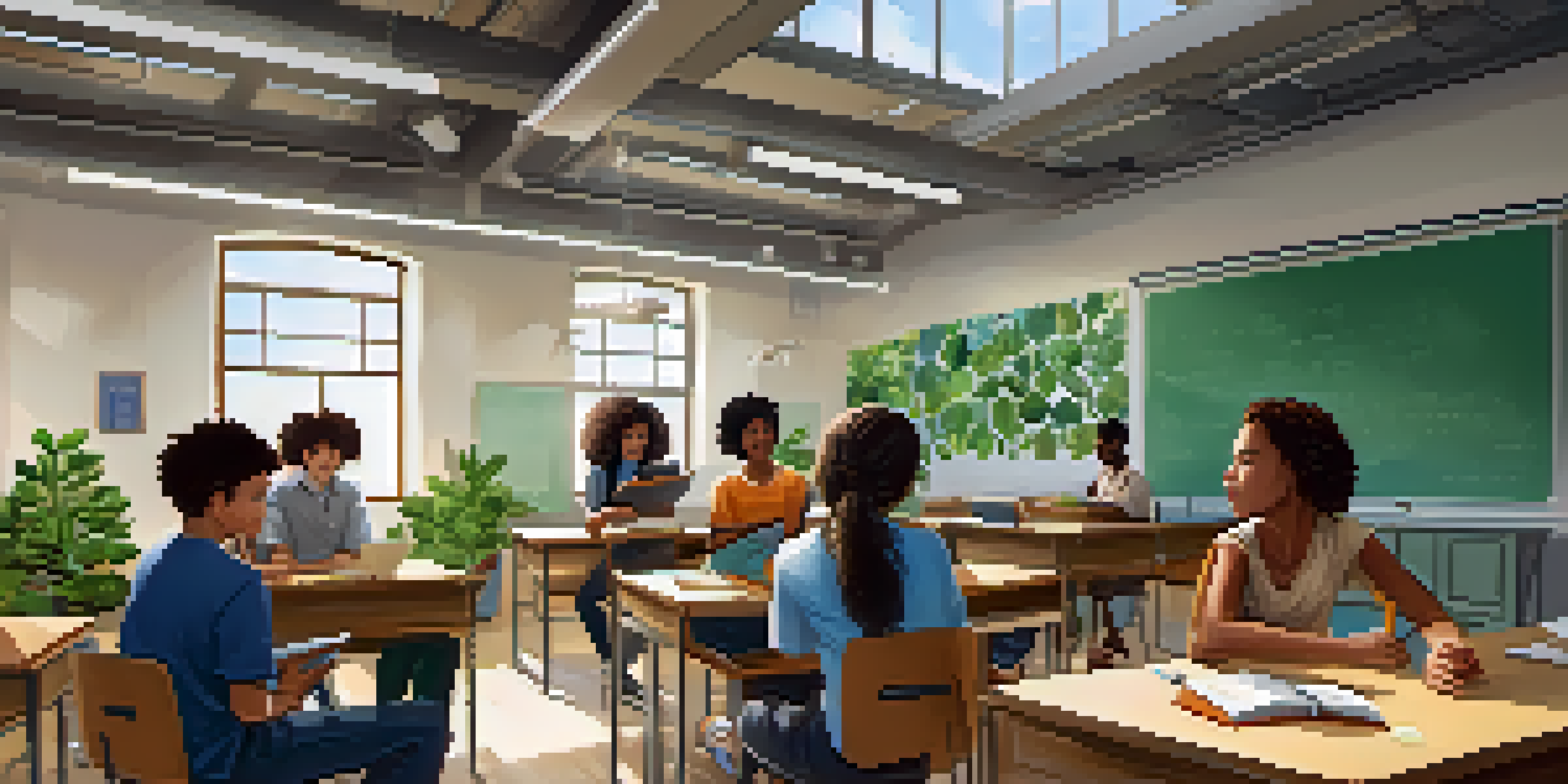The Benefits of Peer Learning in Blended Learning Models

Understanding Blended Learning and Peer Learning
Blended learning combines traditional face-to-face instruction with online learning, creating a rich educational experience. Within this framework, peer learning allows students to engage and learn from each other, enhancing the overall effectiveness of the model. By facilitating collaboration, peer learning fosters a sense of community while also encouraging diverse perspectives on subject matter.
Enhancing Engagement Through Collaboration
One of the most significant benefits of peer learning in blended models is the heightened engagement it fosters. When students collaborate, they become active participants in their education, rather than passive recipients of information. This active involvement not only makes learning more enjoyable but also helps students retain knowledge better, as they discuss and explain concepts to their peers.
Peer Learning Enhances Engagement
Collaborative learning transforms students from passive recipients to active participants, making education more enjoyable and effective.
Developing Critical Thinking Skills
Peer learning encourages students to think critically and articulate their ideas clearly. When discussing topics with their classmates, students must evaluate different viewpoints and construct well-reasoned arguments. This process not only deepens their understanding of the subject but also equips them with essential skills for future academic and professional endeavors.
Fostering a Supportive Learning Environment
In a blended learning model, peer learning creates a supportive atmosphere where students feel comfortable sharing their thoughts and asking questions. This sense of community can be particularly beneficial for those who may feel intimidated in traditional settings. By learning from each other, students build confidence and develop stronger interpersonal skills.
Diverse Perspectives Foster Innovation
Peer learning enriches the educational experience by bringing together unique insights that stimulate critical thinking and creative solutions.
Encouraging Diverse Perspectives and Ideas
Peer learning allows students to benefit from diverse perspectives, enriching their educational experience. Each learner brings unique insights and experiences, which can lead to innovative ideas and solutions. This diversity not only enhances critical thinking but also prepares students for working in increasingly multicultural environments.
Improving Communication Skills
Engaging in peer learning helps students refine their communication skills, a vital asset in today's interconnected world. As they share knowledge and collaborate on projects, they learn to express themselves clearly and listen actively. These skills are essential for effective teamwork and are highly valued by employers across various industries.
Boosting Motivation and Accountability
The sense of responsibility in peer learning encourages students to engage more deeply with the material and supports a positive learning culture.
Boosting Motivation and Accountability
Peer learning can significantly boost motivation by creating a sense of accountability among students. When learners know they will be sharing their insights with classmates, they are often more inclined to prepare and engage with the material. This mutual responsibility fosters a positive learning culture that encourages perseverance and achievement.
Conclusion: Embracing Peer Learning in Education
Incorporating peer learning into blended learning models offers numerous benefits that can transform the educational experience. From enhancing engagement and communication skills to fostering critical thinking and accountability, the advantages are clear. By embracing these collaborative approaches, educators can create a more dynamic and effective learning environment for all students.